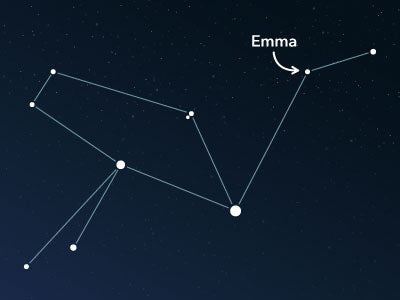The constellation Grus
Características
- Nome latino
- Grus
- Hemisfério
- Hemisfério Sul
- Visibilidade
- September - November
- Área
- 366 deg²
- Estrela mais brilhante
- Alnair (HIP number 109268)
- Especialidades
- Galaxies

The Grus symbolizes the bird crane and is a constellation in the southern sky. It was introduced by a Dutch cartographer in the 16th century. Due to the location of the constellation, some faint deep-sky objects can be observed with the help of telescopes.
Hemisphere, visibility, and area
The constellation Grus is located in the southern hemisphere. Its position ensures that it can be seen from all regions south of the equator. However, north of the equator, it is only visible up to the 34th parallel. This corresponds to places like the north of Morocco, or cities like Atlanta or Los Angeles in the USA.
The months of September, October, and November are the best time to observe the constellation. Especially in October, it is high up in the evening.
The Grus stretches over approximately 366 square degrees of the night sky. Compared to all other 88 constellations, it ranks 45th in size.
In some depictions, only around seven stars are connected with each other, representing a long chain with a branch to the star Alnair (Latin: α Gruis, Alpha Gruis). However, in most visualizations, a multitude of stars relates to each other, clearly showing the Grus as such. The second brightest star Tiaki (Latin: β Gruis, Beta Gruis), represents the central star between the body and the legs. The brightest star Alnair, is the connection to the long neck and head of the animal.
Alnair, with its apparent brightness of around 1.7, is one of the 50 brightest stars in the entire night sky. Its proper name comes from Arabic and means "the bright one." The distance to earth is estimated to be about 100 light-years. It shines noticeably white blue in the sky.
The Crane is embedded between six other constellations in the night sky. These include the Piscis Austrinus, the Microscopium, and the Indus. But also the Tucana, the Phoenix, and the Sculptor border it directly.
Specialties in the constellation
Since the Grus does not lie in the area of the Milky Way, the comparable darkness offers a good opportunity to observe faint galaxies. Some of them are in the northeastern part of the constellation. However, professional equipment such as a telescope is required for their observation.
The brightest galaxy in the Grus has the catalog number NGC 7213. It is a spiral galaxy whose distance from the Milky Way is estimated to be around 77 million light-years. The British astronomer John Herschel discovered it in September 1834. Unlike many others in the constellation, this galaxy is located close to the star Alnair.
With NGC 7424, another spiral galaxy lies in the Crane. John Herschel also discovered it in September 1834. Its apparent magnitude is approximately 10.2 mag. Thus, it is only slightly dimmer than NGC 7213. Its distance from the Milky Way is roughly 41 million light-years.

History
The Grus is one of 12 constellations defined during the journey of a Dutch fleet of ships. In 1595, Pieter Dirkszoon Keyser and Frederick de Houtman and their crew set out on their way to the legendary Spice Islands in South Asia and measured the positions of 135 stars.
That eventually resulted in the constellation Grus, which the Dutch astronomer Peter Plancius included in his celestial atlas shortly after. About two years later, the Flemish cartographer Jodocus Hondius also adopted the constellation. However, he accidentally listed it under the name "Phoenicopeterus" (flamingo) instead.
Finally, in 1603, Johann Bayer included the constellation in his celestial atlas under the familiar name Grus.
PublicadoLeia mais artigos interessantes

An overview of all 88 constellations
Learn more about all 88 constellations and read interesting information about the mythology, visibility, and features.

Aplicativo Planetário
Descubra o céu noturno com nosso aplicativo de planetário!
Disponível para iOS e Android.

Nomeie uma estrela na constelação Crane
Name a star in a constellation and create something that lasts for eternity.